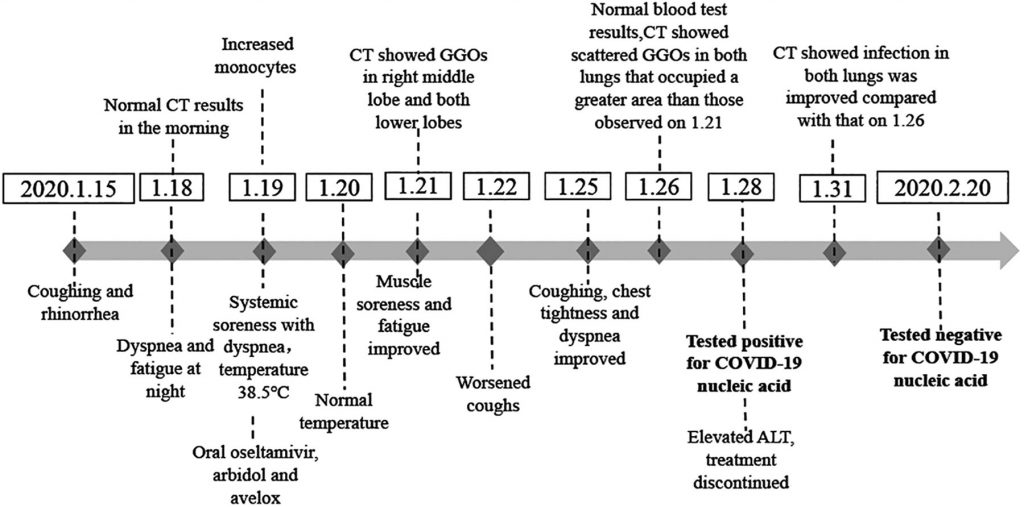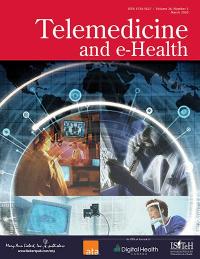With hospital teams stretched thin and the importance of keeping people at home (whenever possible) to recover from virus, this case study on the online management of a COVID-19 infection, offers lessons in how to best manage the virus from a distance.
A team of researchers in Wuhan, China have developed a multidisciplinary self-managed home quarantine method that was effective in controlling the source of COVID-19 infection and was useful in alleviating the shortage of medical resources. Click here to read the article free on the Telemedicine and e-Health website.
The case study “Implications for Online Management: Two Cases with COVID-19” describes the use of an online/offline multidisciplinary quarantine observation form, online monitoring, and strict compliance with quarantine measures to treat one mild and one severe case of COVID-19 infection. The mild case was able to be treated entirely at home, while the severe case ultimately required hospitalization.
“In late 2019 and early 2020, the province of Wuhan, China began to see patients with what was eventually known as COVID-19. While the pandemic has now spread across the globe, this group in China has implemented some effective ways of managing patients via telemedicine tools. These tools proved quite useful and can be seen as one effective example to follow,” says Charles R. Doarn, MBA, Editor-in-Chief of Telemedicine and e-Health.
Online Management of COVID-19 Infection
“Case 1 was a 32-year-old male physician in the emergency department of a class A tertiary hospital. The patient had been healthy without any underlying disease but had contact with NCP patients. The patient presented with cough and rhinorrhea on January 15 and developed dyspnea, soreness, lack of strength, and fever (38.5°C) on January 19. He received oral oseltamivir, arbidol, and avelox as per the physician’s instructions and was rested and quarantined at home. From January 19 to 20, the patient had persistent fever with chest tightness, dyspnea, soreness, lack of strength, and diarrhea, and his SpO2 was 95–97%. His symptoms gradually improved after the use of the multidisciplinary self-quarantine method and his computed tomography (CT) results indicated significant absorption of lesions in the lung (Fig. 1).”
“Case 2 was a 31-year-old male physician in the emergency department of a class A tertiary hospital. The patient had been healthy without any underlying disease but had contact with an NCP patient. The patient developed persistent fever (maximum 39.5°C) of unknown cause on January 5 and his CT results revealed blurry patchy shadows in the lower right lobe of the lung. The patient subsequently developed chest tightness and dyspnea on January 7 and was quarantined in the emergency department for observation. The patient was admitted into the respiratory department on January 10 and his CT results on January 14 indicated significant pathological changes. He was given alternating noninvasive mechanical ventilation and high-flow oxygen therapy, and his SpO2 was 89–97%. The patient tested positive for COVID-19 nucleic acid on January 16 and was thereby transferred to the ICU of a hospital dedicated for the treatment of NCP on January 17. The patient’s conditions began to improve on day 25 after onset, and his CT results indicated significant absorption of lesions in the lung (Fig. 2). This patient was eventually moves to a quarantined unit in the hospital.”
As both patients were medical staff, they were well aware of how important strict implementation of quarantine measures were a successful recovery. Case 1 was living by himself and case 2 was living with his family and had to undergo single-room quarantine. They both implemented the instructions of the nursing staff, including (1) ventilating the room at least twice a day and having few simple items and a garbage bin with a cover in the room, (2) cleaning surfaces with 1,000 g/L chlorinated disinfectant or 75% alcohol at least once daily and washing hands frequently, (3) using a separate set of utensils for eating and washing and sterilizing (56°C for 30 min or longer) the utensils separately, and (4) sterilizing clothes at high temperature (60–90°C) then washing them separately with general laundry detergent, followed by complete drying.2
The quarantine team was a blend of experts in medicine, rehabilitation, psychology, and nursing. A WeChat group was formed for ease of communication. The care providers developed an online quarantine observation form (see Table 1), whereby each symptom was evaluated. The patients were asked to truthfully record their current symptoms and severity on this form through their phones. This form primarily contains general information and progression of clinical manifestations, such as fever, cough, and lack of strength.
“Patients were recommended to rest, avoid excessive work, and do pulmonary rehabilitation exercises when they feel physically fit. Baduanjin (eight section brocade)5 is a traditional Chinese exercise that regulates qi and blood in organs, restores metabolic functions, strengthens the body, activates physical vitality, and improves the immune system. Changes in patient’s blood oxygen saturation and heart rate were monitored in real-time during the exercise. When blood oxygen saturation dropped <95% or heart rate increased >120 beats/min, patients were recommended to stop exercising and to rest and adjust breathing.”
Disease Progression of Case 1

Summary/ The multidisciplinary quarantine team was comprised of experts in medicine, rehabilitation, psychology, and nursing.
- Patients described their symptoms and conditions online using a quarantine observation form at least two times per day.
- The quarantine team created a WeChat group to ease communication. Nursing experts provided guidance on quarantine and disinfection and oversaw patients’ diets and sleep schedule.
- Rehabilitation experts developed a feasible rehabilitation plan, and psychotherapists encouraged patients to stay optimistic.
- Importantly, the quarantined patients were not alone, as they had regular contact with the quarantine team, aimed at increasing their confidence in recovery and enhancing self-management capabilities.
Conclusion/ In summary, confirmed or suspected NCP patients with mild symptoms should ensure sufficient rest, have a balanced diet, and keep an optimistic attitude during the quarantine period. These patients should also monitor their conditions closely, improve self-management of the disease, fill out the quarantine observation form in time, report their conditions, and return for chest CT re-examination regularly under the guidance of the medical observation team. Our online/offline multidisciplinary management model has potential application in our specific quarantine sites and treatment facilities as well as in other countries with severe epidemic.






